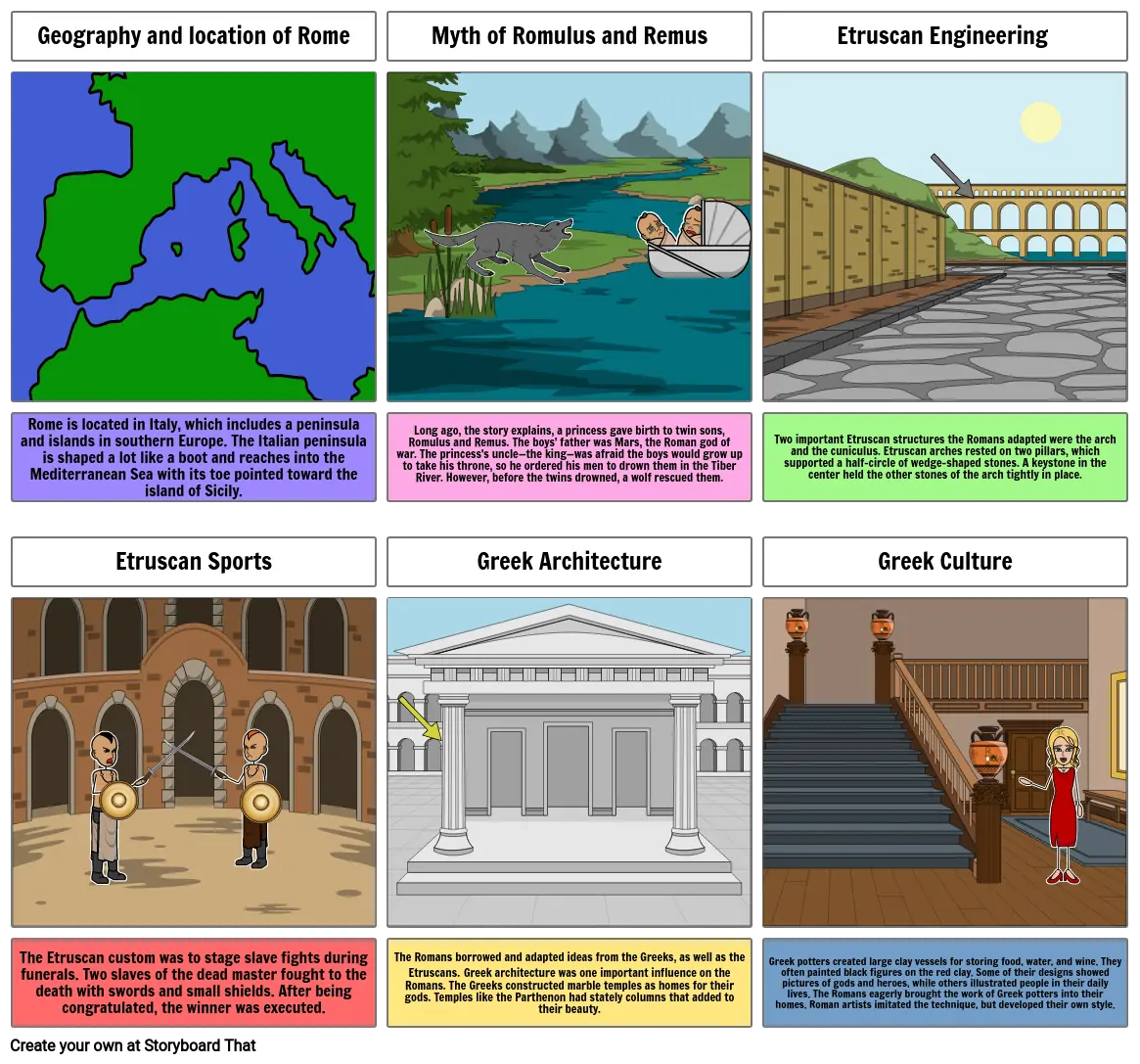The Geography and Early Development of Rome

Storyboard Text
- Geography and location of Rome
- Myth of Romulus and Remus
- Etruscan Engineering
- Rome is located in Italy, which includes a peninsula and islands in southern Europe. The Italian peninsula is shaped a lot like a boot and reaches into the Mediterranean Sea with its toe pointed toward the island of Sicily.
- Etruscan Sports
- Long ago, the story explains, a princess gave birth to twin sons, Romulus and Remus. The boys' father was Mars, the Roman god of war. The princess's uncle—the king—was afraid the boys would grow up to take his throne, so he ordered his men to drown them in the Tiber River. However, before the twins drowned, a wolf rescued them.
- Greek Architecture
- Two important Etruscan structures the Romans adapted were the arch and the cuniculus. Etruscan arches rested on two pillars, which supported a half-circle of wedge-shaped stones. A keystone in the center held the other stones of the arch tightly in place.
- Greek Culture
- The Etruscan custom was to stage slave fights during funerals. Two slaves of the dead master fought to the death with swords and small shields. After being congratulated, the winner was executed.
- The Romans borrowed and adapted ideas from the Greeks, as well as the Etruscans. Greek architecture was one important influence on the Romans. The Greeks constructed marble temples as homes for their gods. Temples like the Parthenon had stately columns that added to their beauty.
- Greek potters created large clay vessels for storing food, water, and wine. They often painted black figures on the red clay. Some of their designs showed pictures of gods and heroes, while others illustrated people in their daily lives. The Romans eagerly brought the work of Greek potters into their homes. Roman artists imitated the technique, but developed their own style.
Over 30 Million Storyboards Created

